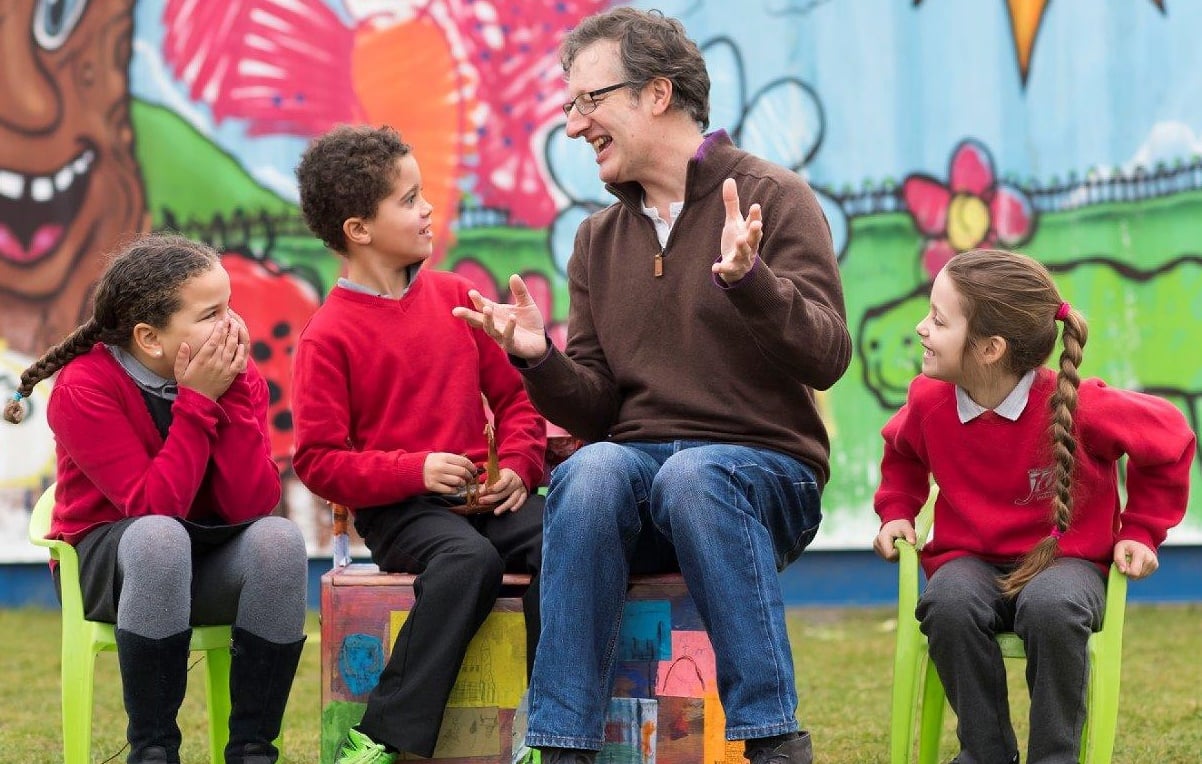
Photo: Ysgol Gymraeg Pwll Coch. Photo by Matthew Horwood.
Arts at the heart of learning
Wales is two years into an ambitious national initiative to improve education outcomes by embedding creative approaches to learning in schools. Nick Capaldi reports on progress so far.
Aneurin Bevan, that most quotable of Welsh politicians, could usually be relied upon to force our gaze above the humdrum and the predictable. So when he said in conversation that “any fool can see that two and two make four, but it takes a real capacity to stretch it to five, or better still, six or seven,” he was merely acknowledging the importance of imagination and creativity in helping us to see beyond the obvious.
This spirit of ambition was much needed five years ago as Wales digested the disappointing results of its schools’ performance in the international PISA league tables. New thinking was needed and, as part of a series of initiatives, an independent report was published in September 2013 as the culmination of a year-long review of arts and education in the schools of Wales.
Creative learning plan
Commissioned by the Welsh Government, the report was written by Professor Dai Smith, former chair of Arts Council of Wales (ACW). The Welsh Government accepted all of the report’s recommendations and Creative learning through the arts – an action plan for Wales was published in March 2015. The plan set out an extensive programme of activity, to be jointly funded by ACW and the Welsh Government to the tune of £20m over five years.
Teachers are telling us about how they observe children growing in confidence, taking the lead in group situations and of improvements in decision-making skills
Our partnership with the Welsh Government is giving us the opportunity to reboot the whole way we think about and support the role that creativity plays in the lives of our young people. We knew that it couldn’t just be about promoting access to the arts in schools, important though this is.
We were interested in delving a little deeper, and seeing whether creative techniques could illuminate and invigorate learning across the whole curriculum, raising levels of attainment and narrowing the gap between the best and the least well performing students.
Programmes and funding
The programme that we launched has two main building blocks. The first, the Lead Creative Schools scheme, supports schools to develop bespoke programmes of learning designed to improve the quality of teaching and learning. Schools are matched with creative professionals who use teaching and learning techniques that are specifically designed to be practical and relevant to real-life curriculum demands.
The second element is the All-Wales Arts and Education Programme. There’s a fantastically rich and varied range of arts and cultural activities available to schools across Wales, but the challenge is to make this more accessible. Sometimes the barriers can be affordability, but it can also be as basic as a lack of school transport.
The funding is about removing these barriers, and four regional networks across Wales are helping to connect schools with artists and arts organisations. They’re also coordinating networking opportunities and delivering high-quality professional development training for teachers and artists.
The Go and See fund is supporting visits to high-quality arts events, while the more ambitious can apply for support from a Creative Collaborations fund. This allows those schools that want to work in a more sustained way with an arts, cultural or heritage organisation to develop more innovative and ambitious projects.
Evaluation and ambition
As we near completion of the programme’s second year, improvements are already evident in participating schools. This is important. We’ve gone out on a limb to persuade the Welsh Government that the results will be sufficiently impressive for them to want to embed creativity formally into the new school curriculum once the programme has finished.
So far so good, but the proof of the pudding will be in the independent evaluation that’s tracking the project over its five-year life. We’ve always known that developing the creativity and imagination of young people is vital, but we need to be able to demonstrate how this happens, and the benefits that it brings.
Unsurprisingly, the Creative Learning programme is confirming the rather obvious point that different children learn in different ways. Acknowledging this and doing something meaningful about it are two separate things. It’s often difficult to cater for varying needs in a classroom environment, and standardised approaches to meeting the needs of learners rarely work. Bringing creativity into the mix provides teachers and learners with a range of new learning techniques for a well-rounded, rewarding and motivational learning experience.
In three years’ time we’ll know how well it’s worked. We hope to be able to offer clear, measurable proof that the approach deserves continued investment. Some achievements can be measured through school attendance and test scores, but teachers are telling us about how they observe children growing in confidence, taking the lead in group situations and of improvements in decision-making skills.
The programme is unashamedly ambitious. It’s all about nurturing and developing creativity, broadening experience, improving academic success, developing crucial life skills and igniting the dreams of our young people. Because as Aneurin Bevan knew only too well, a vision constrained by low or base ambition is no vision at all. Aim high, and we might just be surprised by what we can achieve.
Nick Capaldi is Chief Executive of the Arts Council of Wales.
www.arts.wales

Join the Discussion
You must be logged in to post a comment.